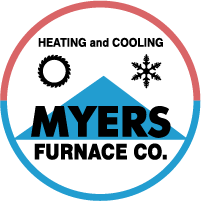
If you’re thinking about air conditioner installation in Belton, you should also be looking at your new air conditioner’s SEER rating.
SEER stands for Seasonal Energy Efficiency Rating. Simply put, it measures how effective your air conditioner is at converting electricity into cold air. A greater number indicates your air conditioner is more efficient, which is great for your electric bills.
However, there are many differing models out there for air conditioners. And a greater SEER ranking frequently includes a higher cost. So, how do you know which one is right for your home?
At Myers Furnace Company, we provide a free, no-pressure home comfort analysis. You can schedule one by contacting us at 816-249-1619. Our skilled air conditioner installers will work with you to help you find the right air conditioner for your needs. Plus, they’ll also offer you a free, no-obligation estimate.
Right now, let’s go over SEER ratings and how they can impact your family’s comfort. And your energy expenses.
What Does the SEER Rating Even Matter?
In 2016, the federal government made new SEER criteria. New air conditioners are required to be at minimum 13 SEER in the northern United States and 14 SEER in the southeast and southwest. If you don’t know when you had your air conditioner put in or what its SEER rating is, you can find the sticker on the condenser outside your house. If you can’t locate the sticker, you can give us a call at 816-249-1619 for support.
If your air conditioner was put in before that time, it’s presumably much less efficient. Air conditioner technology has quickly advanced in the past few years, with huge advances in energy efficiency and smart home compatibility. Pairing your new air conditioner with a smart thermostat could help you save even more on electric expenses, because the thermostat can seamlessly change your temperature settings when you’re out.
If your present air conditioner has a SEER rating between 8 and 10, getting a 14-SEER system could save you close to 30–50% on annual air conditioning costs. Your savings depend on your air conditioner size and your temp settings.
Is a Higher SEER Rating Always Better?
An air conditioner with a higher SEER rating will be more efficient at converting electricity for cooling. The most efficient ones, which can go as great as 26 SEER, carry ENERGY STAR® certification. This certification signifies the air conditioner has achieved EPA guidelines for energy savings and environmental conservation.
While ENERGY STAR air conditioners are typically more costly, you’ll usually get the difference returned over time through reduced electrical bills. These air conditioners, which are generally rated 16 SEER and better, consume about 8% less power than other new models, according to ENERGY STAR.
One of the largest differences between a 14 SEER and 16 SEER is variable-speed capability. A variable-speed air conditioner can operate at a number of speeds. This improves comfort for your home while keeping your power expenses reduced. It can also keep temperatures and humidity more consistent, since it can run for longer without consuming a lot more electricity.
When buying a variable-speed air conditioner, you’ll want to make sure that your furnace or air handler is compatible. This is because your air conditioner depends on this equipment’s blower to send cold air across your house. Furnaces only last for around 20 years, so if yours is getting old, we recommend furnace installation at the same time so you can receive all the advantages of your variable-speed air conditioner.
When you’re ready to replace your air conditioner, the cooling professionals at Myers Furnace Company are ready to support you. Give us a call at 816-249-1619 to schedule your free home comfort analysis now.
